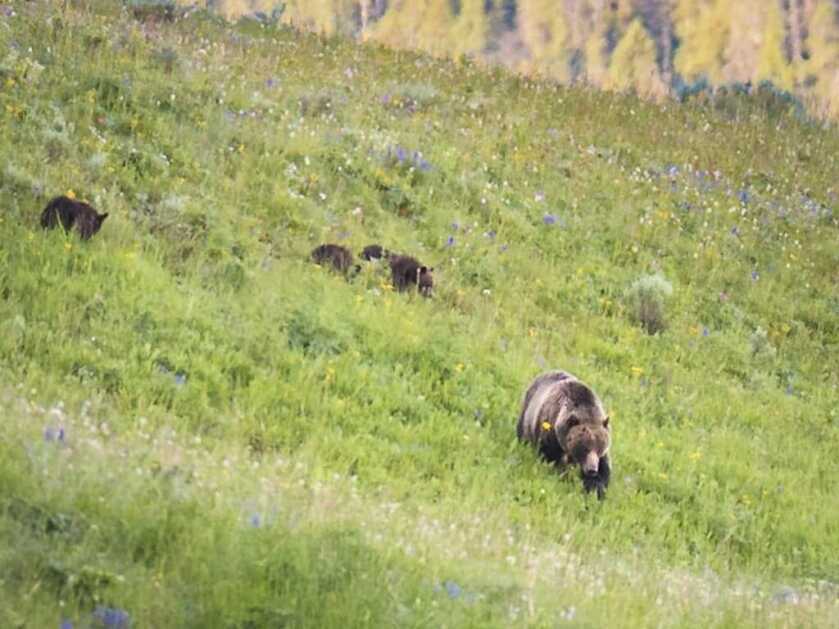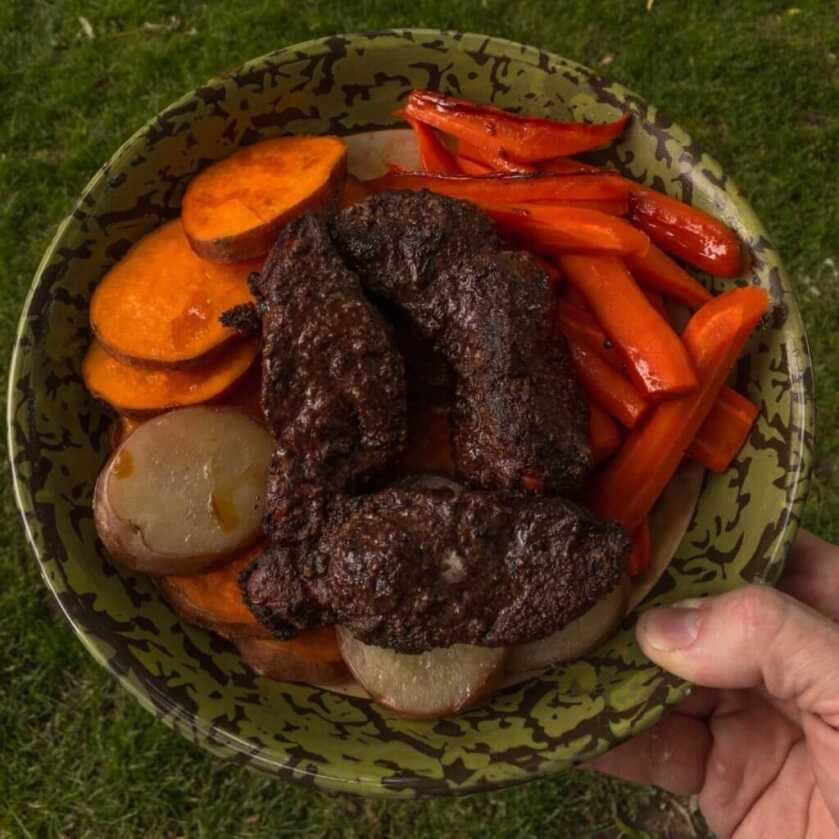
There’s a brown paper bag in my freezer right now whose sole purpose is to keep me from seeing the last two pieces of Antelope meat from last fall. If I see them, I’ll want to eat them, but I’m keeping them in reserve so I can compare them side by side with black bear meat. I’m trying to figure out which of the two is my favorite.
Most people have two hangups with bear meat. “I’ve had it, but it was so greasy,” is the primary response. This is simple to overcome: remove the fat. Every scrap of it. Bear fat has a very low melting point so when it’s in your mouth it melts into a liquid and just doesn’t feel very nice. If you simply spend some time and remove all the fat from the outside, you’ll be left with the sweetest meat you’ve ever tried and it’s naturally tender. I’m salivating thinking about it.

The second problem folks have is that your bear likely carries trichinosis, which is not a fun disease. In fact, I have a friend who contracted it and she was miserable. Of course, she got it from pork purchased at the supermarket just a few years ago. If you handle the meat properly, cook it thoroughly, and clean up properly you shouldn’t have any problems. Wear gloves while butchering and clean your cooking area and don’t reuse washcloths without laundering them. Cook the meat to an internal temperature of 160 degrees Fahrenheit and there will not be any problems. I blame Steve Rinella for proliferating the hazards of trichinosis because he contracted it after eating meat cooked medium rare. And yet, he got over it and continues to eat bear. If this is your concern, well… send me your meat and I’ll devour it for you.
肉桂: Meat Spice
For this recipe, you’re going to make a simple paste of spices and oil. One of my favorite meat spices is cinnamon. When I lived in China teaching English at a university I made cinnamon rolls for my students at Christmastime and they all thought it was weird to have a meat spice combined with sweet rolls. In fact, in Mandarin, cinnamon basically means “meat spice.” Ever since I’ve used it for meats and it’s marvelous. It accentuates bear meat perfectly.
Use a basting brush to apply the paste to your meat, or just rub it on with your fingers. Use leftovers on some veggies like sweet potatoes, onions, and carrots. Bear meat goes well with foods that bears would love to eat. Form a container out of foil and place thin-slice veggies in it. Baste them with the leftover meat paste, and add some butter and brown sugar and cook them on the grill with the meat.
On my Camp Chef gas grill, I use the lowest setting and preheat the grill. Unlike beef steaks, you need to cook this meat slowly so that the heat can penetrate through the meat and cook it thoroughly without drying out the outside. Use a meat thermometer to ensure the interior reaches 160 degrees. My thermometer has an alarm that is set to go off when it reaches 160 and I just leave it inserted in the meat.
What You Need
- Tenderloins or back strap steaks. Cut four or more steaks, keep them around an inch thick so that they don’t dry out. Ensure that you’ve removed every scrap of fat. This rub will cover about four steaks.
- 2 Tablespoons oil—canola or olive oil work well
- 2 teaspoons salt
- 2 teaspoons cinnamon
- 3 teaspoons black pepper
- 1 teaspoon ground cloves
- 1 teaspoons nutmeg
- 3 teaspoons allspice
- 1 teaspoon garlic powder
- Meat thermometer
What You Do
Combine the oil and spices in a small bowl. Allow it to sit for a few minutes so the spices absorb a little of the oil. Now rub it on the steaks — be sure to stir it up again before you apply it to the meat.
Heat the grill to a moderate temperature. On mine, it’s about the same setting I use with the griddle to make pancakes. It’d be a good idea to grill one steak first before you try serving a bunch of people to ensure you don’t dry it out. Baste it with the oil paste while cooking if you feel it’s drying out.
Use the meat thermometer and make sure it gets up to 160 degrees in the middle. Mine take about 10 minutes to get up there.
Remove the meat from heat and cover for at least five minutes to let the meat rest and re-absorb its juices. Serve hot and don’t be tempted to slather it in barbecue sauce. Enjoy the naturally sweet bear meat. It’s awesome with a bit of sweet potato. I bet bear meat will become one of your favorites.


I hunted Bears out of Jackson Wyoming with the best of the bunch, Ben Taylor, during the middle of the last century. After dressing out two black bears killed at a bait, he advised me that the livers were consider gormet by the locals, so I took them Both home and served them to my family with a generous smothering of bacon and onions. The result, never leave a bear liver in the field, it is for liver lovers, the very best.
Be sure to cook those bear steaks good. Trichina worms are best served up well done.
Richard-Grizzles? Maybe a Black Grizzly? I used to deer hunt-now they are in my front yard eating my flowers. No bears yet but killing one here will bring back the death penalty -for bears NO-for Me.
Story about black bear steaks and you post a pictures of grizzlies? Really?
I just gaind three pounds.